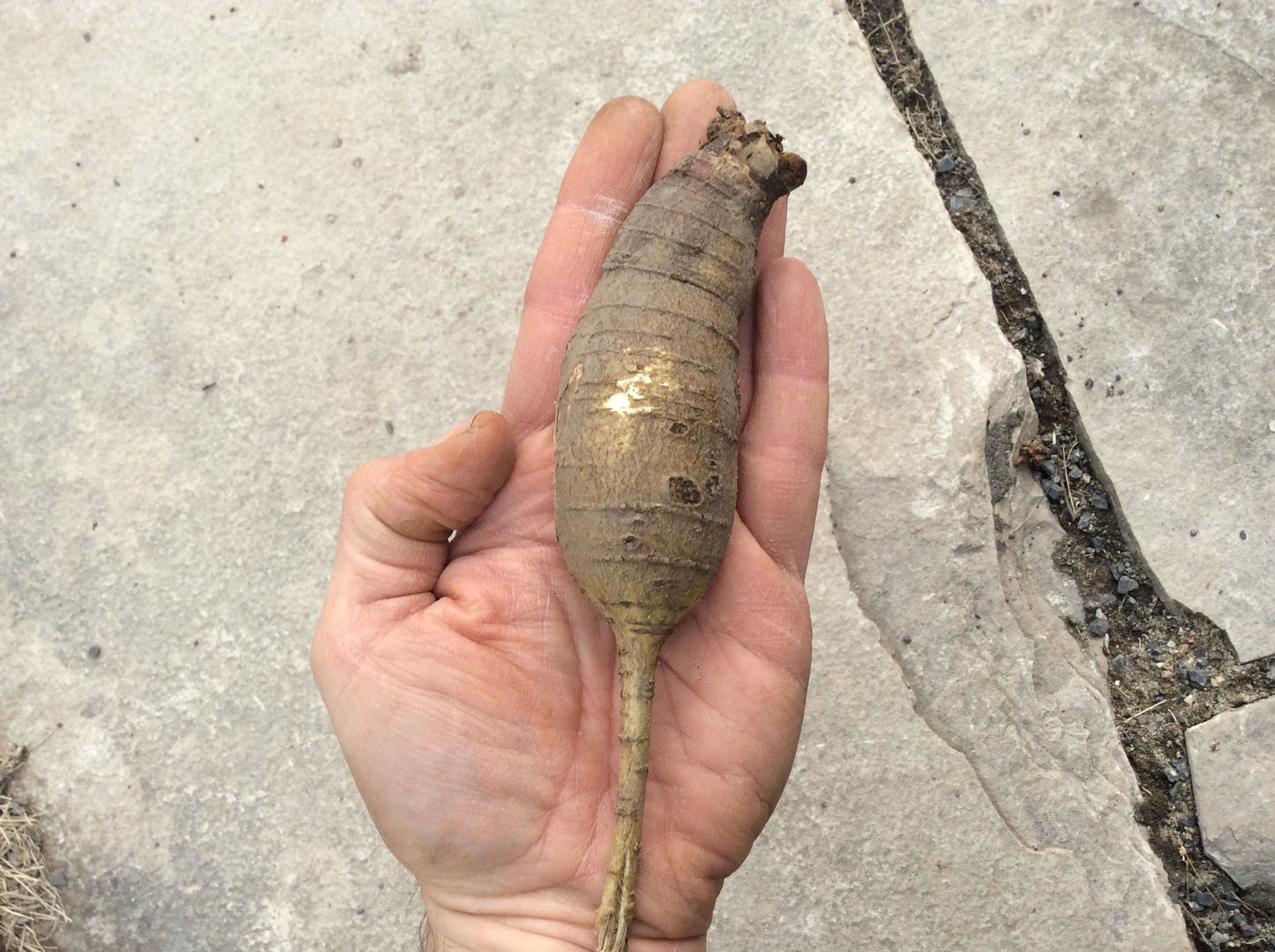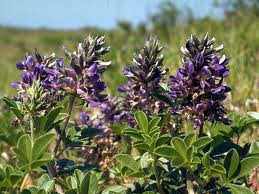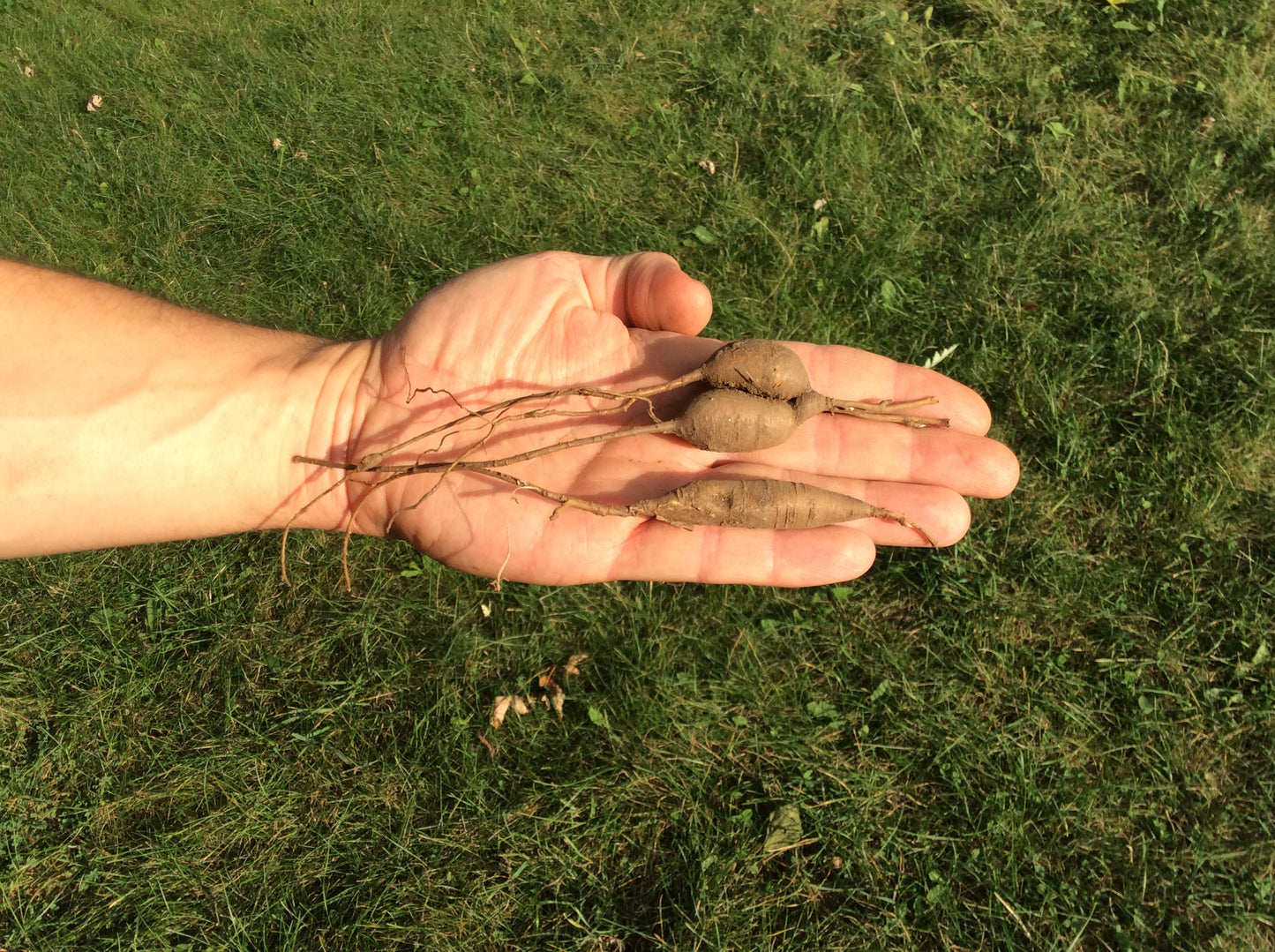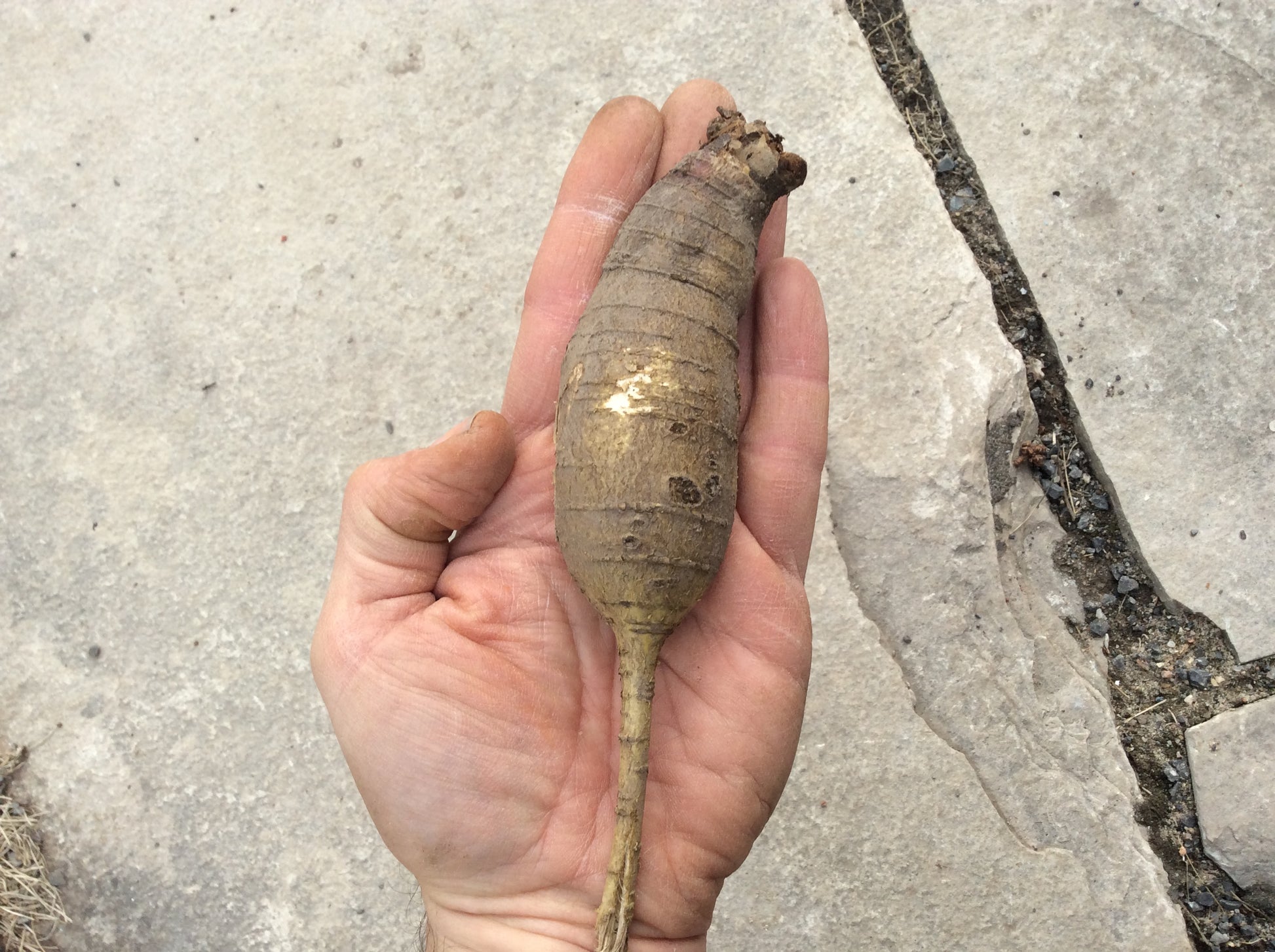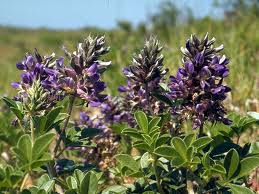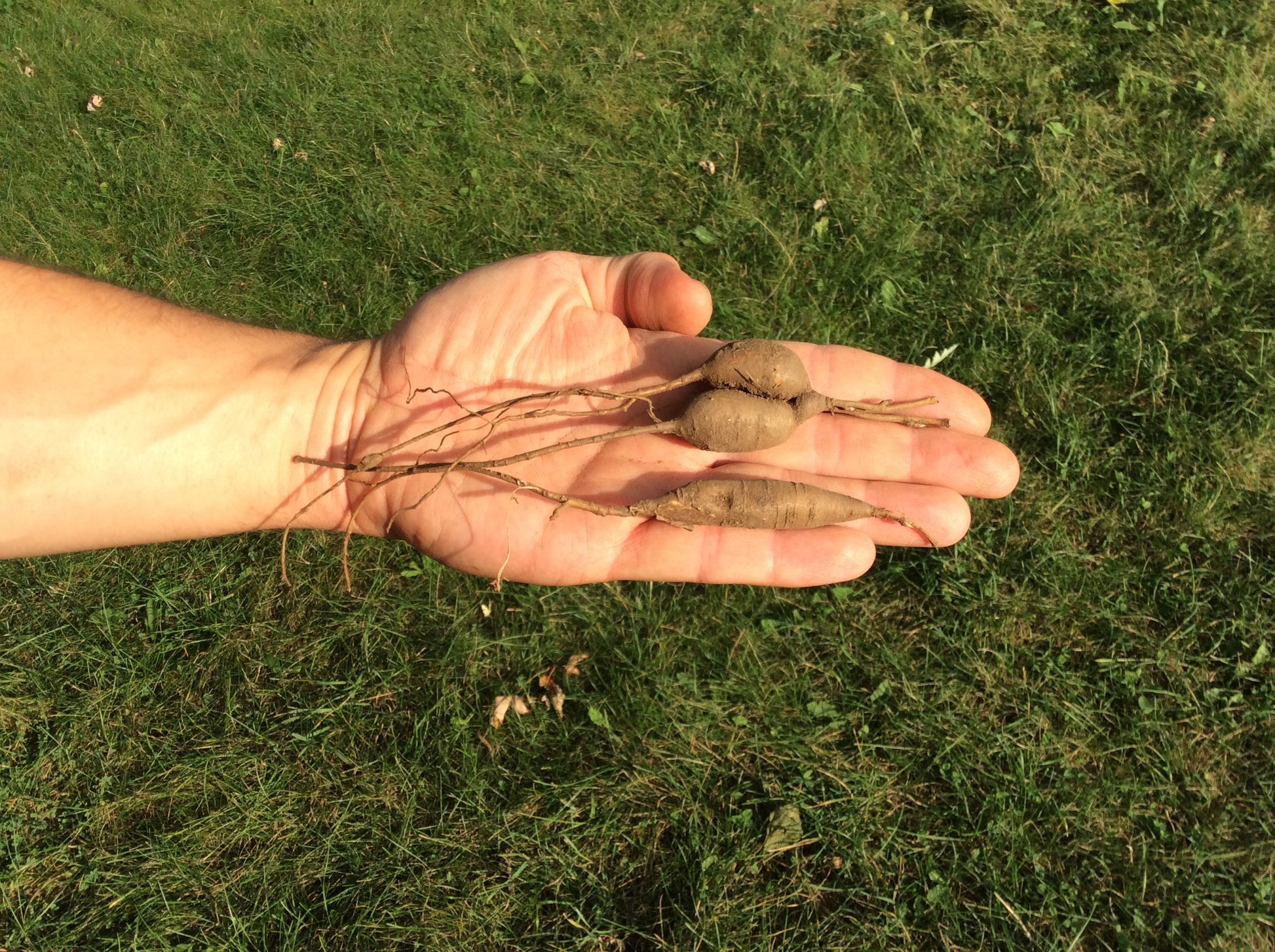Prairie Turnip - Pediomelum esculentum (10 seeds)
Prairie Turnip - Pediomelum esculentum (10 seeds)
Couldn't load pickup availability
Pediomelum esculentum, Prairie Turnip, indian breadroot, or timpsula is a widely distributed legume of the North American plains. It bears pretty, blue flowers and ornamental palmate leaves. The edible part is the large, white-fleshed, carrot-shaped taproot. It can grow to an impressive size, but, like many vegetables, its taste and texture are best in younger plants (the second-year root is best in our experience). One of our favourite plants, and the only one for which we only sell the seeds. The plant does not transplant well, because of the long taproot. But it is easy to start from seed (we may be able to ship first-year roots in some cases, so contact us if you have a strong preference for this option). We sell them in sets of 10 seeds.
Cultivation: Easy to start, can be challenging to grow, but well worth the effort. It does best in light (sandy) soil, full sun. First-year plants remain small and spend most of their energy developing a long, thin taproot. The second-year root is the size of a small carrot. It gets much larger during the next two to three years, but is best eaten the second or third year. Large numbers of seeds are produced sometimes the first year, but usually the second year, and under the right conditions, the plant self-seeds readily. Seeds ripen at the end of the summer and can either be planted directly once collected or the following spring. Like many legume seeds, they should be soaked before planting, especially if kept dry for several months. The seeds also need scarification (the hard coat needs to be nicked for germination to occur) which can be achieved in different ways: rub the seeds gently with sand paper (and then soak for a day), plant in the fall and let seeds scarify naturally, or pour hot water over seeds (boil water, wait 3 minutes for it to cool slightly, then pour over seeds, just enough to cover, and soak for a day). We’ve had great success with this third method. 🌱
Food preparation: Rich in starch and with a mild, slightly sweet taste when young, the root remains firm even after lengthy cooking. It works great in stews or as a side dish, much like other root vegetables. The older roots tend to get tough and may develop a bitter aftertaste.
Ethnobotany: A staple plant of native people of the North American prairies, it was collected in great numbers and eaten in various ways: fried, stewed, or turned into flour. The roots were often dried and braided together (much like garlic is braided), and could be kept almost indefinitely. It was also widely used by early explorers and is still part of the diet of some North American native tribes. See the recipe for a traditional Lakota soup on Melvin War Eagle’s blog, complete with pictures, stories, and all sorts of other interesting things: https://hanblechiadesigns.wordpress.com/2014/05/06/wohanpi-traditional-lakota-soup/.
Share
